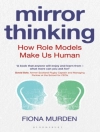At last, a book on therapy which is easy to read and jargon-free, yet manages to convey the richness of the group experience.’
– Penelope Campling, British Journal of Psychiatry
‘It is vitalising reading – and should be on the shelves of any psychotherapy department and of any therapist with an interest in groups.’
– Chris Evans, British Journal of Medical Psychology
‘The purpose of this short, highly readable and extremely informative book is ‘to provide the reader with a practical insight into the group-analytic method of group therapy’. The book achieves this goal through a format that is interactive with the reader.’
– Jerome S. Gans, International Journal of Group Psychotherapy
A Workbook of Group-Analytic Interventions is designed to complement the academic and experiential training of therapists. Written by experienced practitioners, it gives trainees a practical insight into the ways in which group analysts may tackle difficult situations, allowing them to understand more fully the nature of intervention right from the beginning of their training.
Eight situations drawn from real psychotherapy groups are presented in detail so that readers may exercise their own skills in taking decisions and judging appropriate interventions. Each situation is then analysed in depth by one of the authors, who describe and comment on the thinking behind the interventions suggested by a panel of group analysts.
The book gives the trainee a wide and informed appreciation of different situations arising in groups and appropriate ways of handling them. It provides an excellent base from which to start to practise.
Tabella dei contenuti
Introduction. 1. Interventions. 2. Eight Group Situations. 3. The First Session – An Apparent Distraction. 4. Turn Taking in the Early Sessions. 5. A Potential Drop Out. 6. A Member Seeks Approval for Concurrent Individual Therapy. 7. An Invitation to a Christmas Party. 8. Threatened Premature Termination of Therapy. 9. Disillusionment with Therapy. 10. A Threat of Physical Violence. 11. Intervening to Establish and Maintain a Therapeutic Environment. 12. Interpretation: Why, For Whom and When. 13. Conclusions. Appendix: Theoretical Approaches to Group Psychotherapy. References. Index.
Circa l’autore
David Kennard is Head of Psychology and Psychotherapy at The Retreat, York, and Director of the Tuke Centre for Psychotherapy and Counselling. He is also a group analyst, and has written extensively on group therapy and therapeutic communities. Previously, he was Regional Tutor in Clinical Psychology in Trent, Clinical Psychologist at Rampton Hospital and at Littlemore Hospital.












